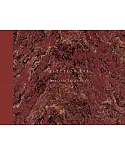Photographer Eadweard Muybridge was above all an innovator who played a groundbreaking role in the creative transformation of late nineteenth-century American and European culture. He pushed
the limits of existing technology between 1850 and the dawn of the twentieth century, a time of rapid social and political change. Inspired by a complex set of goals that were artistic,
scientific, commercial, and above all personal in nature, Muybridge reinterpreted the grand landscape traditions of photography, surveyed the construction of Western railroads, depicted the
growth of the Pacific Coast of the United States, and documented the Modoc War and Central American agriculture. He then developed the ability to freeze photographic sequences describing human
and animal locomotion, and reanimated these in some of the first projected motion pictures. Muybridge helped alter and expand our understanding of the world, yet the full complexity of his art
is little known today.
Born in England in 1830, Eadweard Muybridge immigrated to the United States in the early 1850s and began his career as a photographer in San Francisco in 1867. He radically reinvented the
aesthetic and technical capabilities of the camera and in doing so gave us a new way to conceive of motion, time, and space. Today, the impact of Muybridge's art can be found in many places,
from Thomas Edison's kinetoscope viewer and Marcel Duchamp's Nude Descending a Staircase to the poignant paintings of Francis Bacon, the blockbuster film The Matrix, and U2's video for their
hit song "Lemon." It is interesting now to imagine Muybridge's world, little more than a century ago, when our sense of time was turned upside down for good. Helios: Eadweard Muybridge in a
Time of Change constructs a new understanding of Muybridge's innovations and demonstrates his influence as a pioneer of modern art.





















